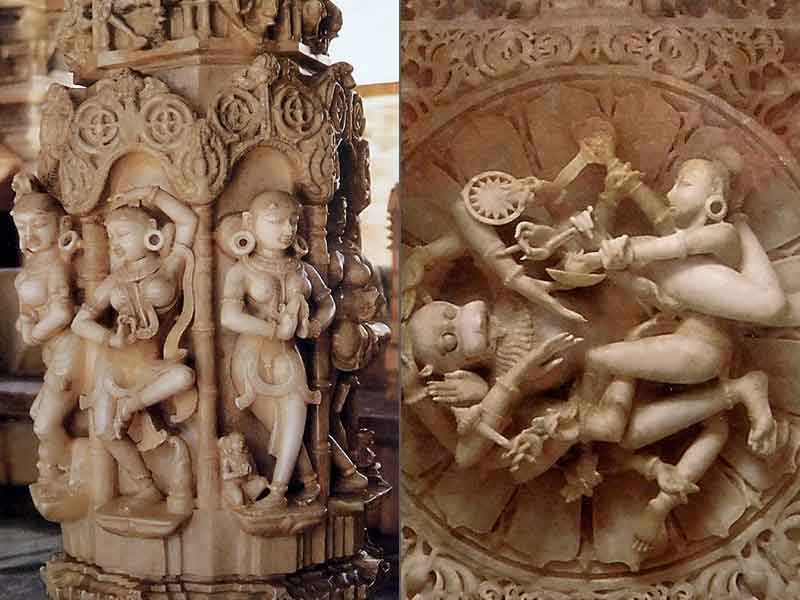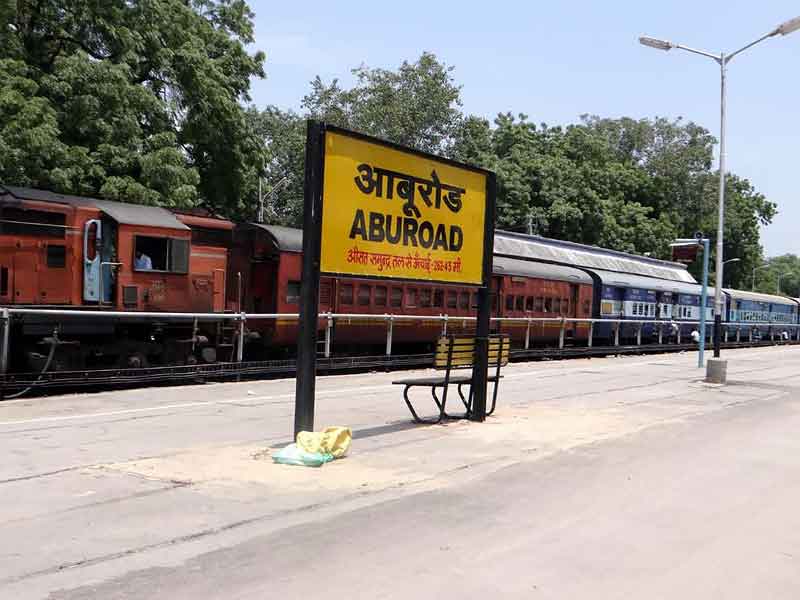One of the most exquisite Jain temples in the world, Dilwara Temple is renowned for its incredibly spectacular architecture and marble workmanship. The walls, doorways, arches, pillars, and panels of the shrine are covered in tiny statuettes. On a trip to Mount Abu, do not skip a visit to this temple if you wish to immerse yourself in holy energy.
Visitors will be enchanted by this temple’s stunning interiors the moment they set foot inside. Vastupal Tejpal constructed the Dilwara temple between the 11th and 13th centuries, making it a significant example of Nagara architecture. There are 5 little temples inside the larger temple:
Every day, a sizable number of tourists and pilgrims come to this temple. This temple is certainly one of a kind and distinctive due to the intricate carvings on the marble stone and the skilled workmanship of the builders. It has a wonderfully magnificent and luxurious entranceway.
Which Dynasty Constructed the Dilwara Temple?

The Chalukya Dynasty constructed the temple during the eleventh and thirteenth centuries AD. They have temples built in the “MARU GURJARA” architectural style, which is renowned for its use of exceptionally clean white marble and elaborate decorations.
Temples of Dilwara
Shri Adinath or Vimal Vasahi Temple

In the year 1031 A.D., Gujarat’s king Vimal Shah, Minister of Solanikar, erected this temple. Adinath Ji or Rishab Dev is the first Jain Tirthankar, and this temple is the oldest of all the temples. An open courtyard with a marble-carved stone-lined passage surrounds the Vimal Vashi temple. The carved figures depict animal life and the journey a person takes from a dream to a Tirthankara incarnation. The main hall, Gudh Mandap, is where Lord Adhinath’s idol is located. It is thought that 1500 Masons and 1200 workers spent 14 years and Rs 185.3 million building the temple.
Shri Neminath Ji or Luna Vasahi Temple
In the year 1230, two individuals by the names of Tejpal and Vastupal constructed this temple. Shree Nemi Nathji, the 22nd Jain saint, is honored at this temple. It is remarkable to witness the black marble Shri Nemi Nathji idol among the 360 exquisitely detailed miniature Jain Tirthankar idols in the Rag Mandapa hall. Maharana Kumbha of Mewar erected the pillars in this temple.

The Vimal Vasahi temple served as the inspiration for the temple erected in honor of Vastupal and Tejpal’s late brother Lunig. 72 seated Tirthankara statues are arranged in a circular ring, and immediately underneath them, 360 tiny Jain monk figures are arranged in another circular band. The temple’s two pillars are one of its unique features.
Shri Rishabdaoji Temple
Between 1316 and 1432 A.D., Bhima Shah, a minister of Ahmedabad’s Sultan Begada, constructed this temple. Because most of the figures in this temple were made of “Pitthal” (brass metal), it is also known as the Pittala/Peethala temple. The Adinatha temple is another name for this building. Rang mandap and the hallway appear to still be under development. According to the inscription, the former, desecrated idol was replaced and put in 1468–1469 AD, weighing 108 mounds (four metric tonnes). The sculpture, created by artist “Deta,” is 8 feet tall, and 5.5 feet wide, and the figure is 41 inches tall.
Shri Parshvanath Temple
Among all the Dilwara temples, this is the tallest shrine. The temple was built in 1458–1459 by Sangvi Mandlik and his family, and it has four large mandapas. Dedicated to Lord Parshvanath is this temple. There is a three-story building there. Four large mandapas on the ground floor’s four sides of the sanctuary each contain a Chaumukha Parshvanath idol.

The front iconography of the Chaumukha idol on the first level features Chintamani Parshvanath, Magalakar Parshvanath, and Manoratha-Kalpadruma Parshvanath, all of whom are shown wearing hoods made of nine cobras. Parshvnath can’t be made out in the fourth picture. 14 nightmares that the mother of the Tirthankaras experienced before their births are shown in the hallways.
Temple of Shri Mahaveer Swami
Lord Mahaveer, the Jains’ 24th Tirthankara, is the object of worship in this shrine. Built in 1852, it. It is a little temple with sculptures all around it. Pictures painted in 1764 by the Sirohi, Rajasthan, painters may be seen on the porch’s top walls. There are three Tirthankara idols, one on either side of Mahavira. A rectangular marble slab with a triangular stone covering it, located outside the temple, has 133 pictures of the Tirthankara in miniature, with a bigger image in the centre.
Temple’s architectural style
The shrine is surrounded by a lush landscape. Visitors who come here savor the tranquility and sense of calm and a divine connection to the Supreme Power. Five portions of this temple complex are devoted to five Jain Teerthankaras. Lord Mahaveer Swami, Shri Adinathji, Shri Parshavnathji, Shri Rishabdaoji, and Shri Neminathji are honored in these portions. Among these, Vimal Vasahi, also known as Lord Adinathji’s Temple, is said to be the oldest.

Between the eleventh and thirteenth centuries, the temples were built. The marble pillars and ceilings’ elaborate stone carvings are incredibly breathtaking. The temple features several representations of Hindu and Jain mythology. The temple has a unique appearance because of the abundance of petals, lotus buds, and flowers carved on the ceilings and pillars.
Also read: Top 10 Havelis In India That Are Favourite Tourist Spot
How to reach

It is quite simple and comfortable to visit this temple because it is only around two and a half km from Mount Abu. There are several public and private buses accessible, offering their services from Jodhpur, Udaipur, and other significant state cities. There are also available private taxis and cabs. Udaipur has the closest airport, located almost 185 kilometers from Mount Abu




























